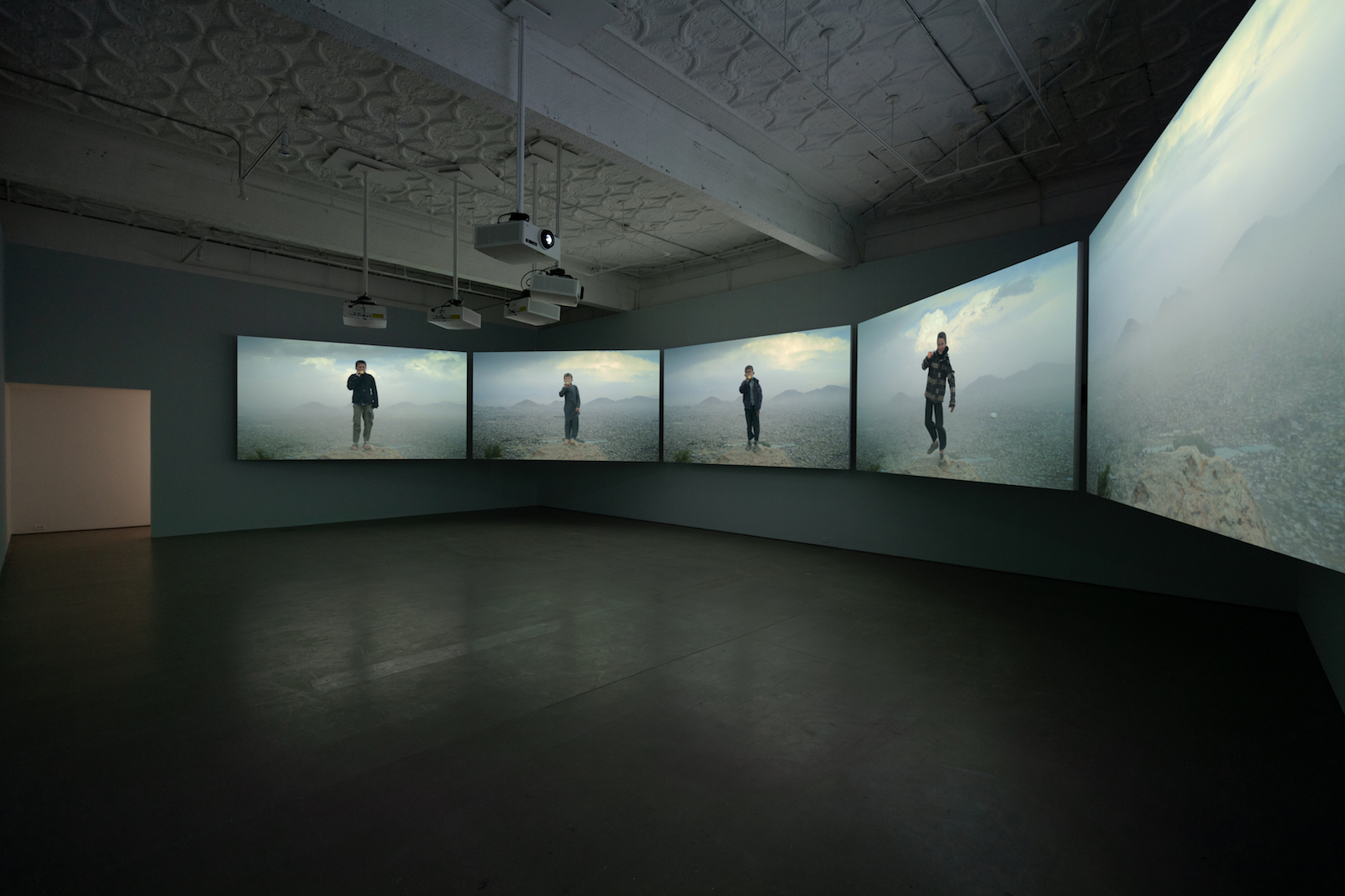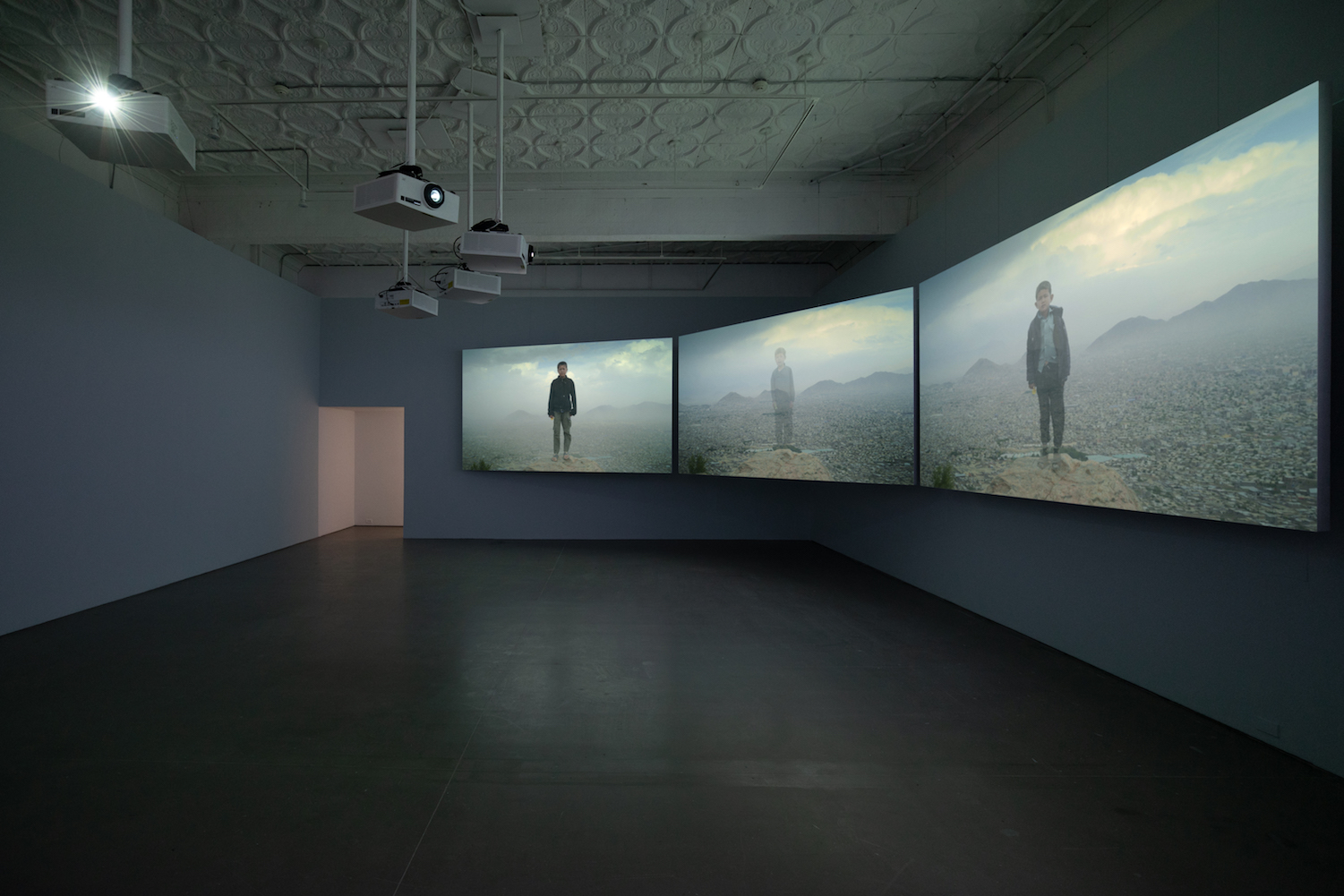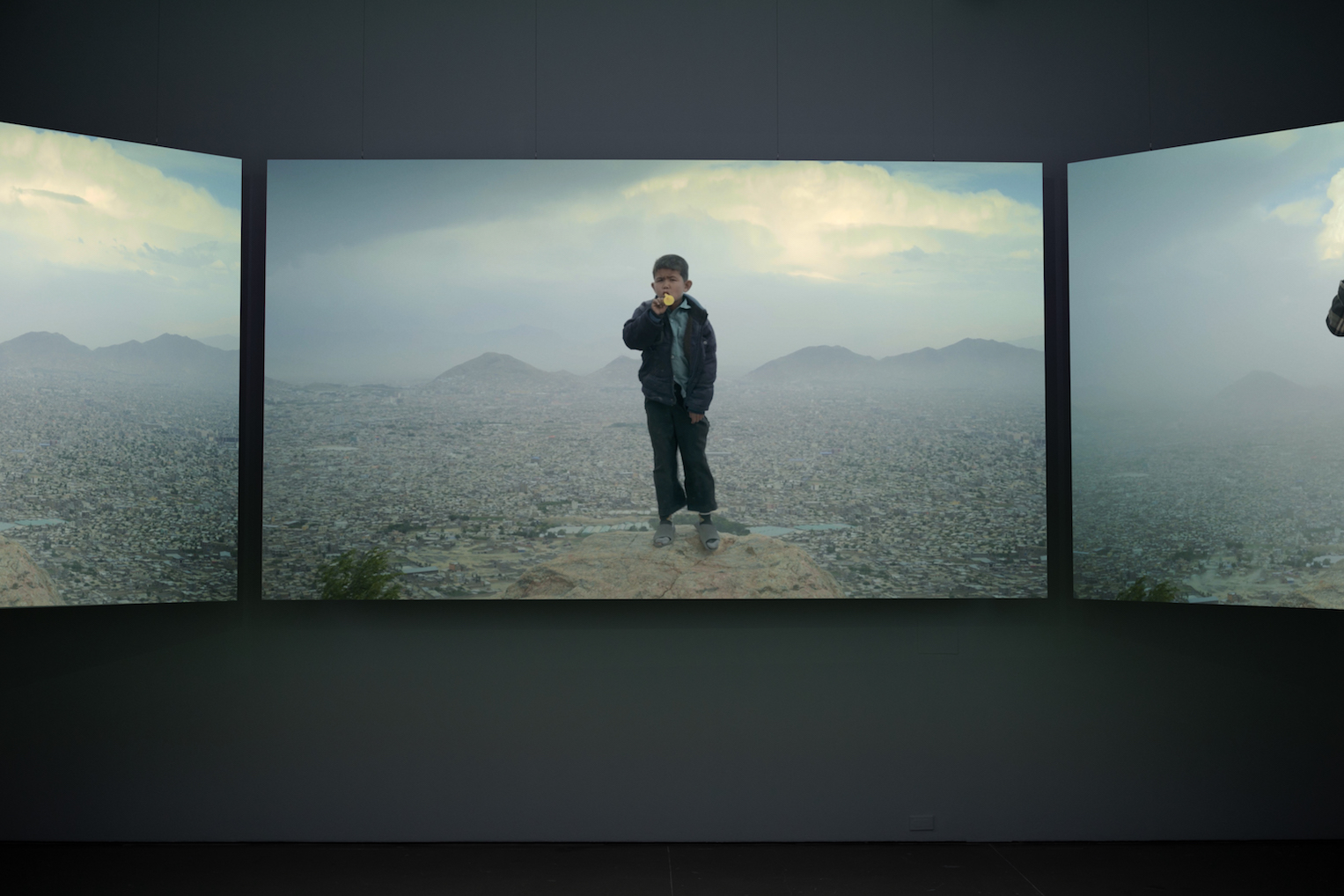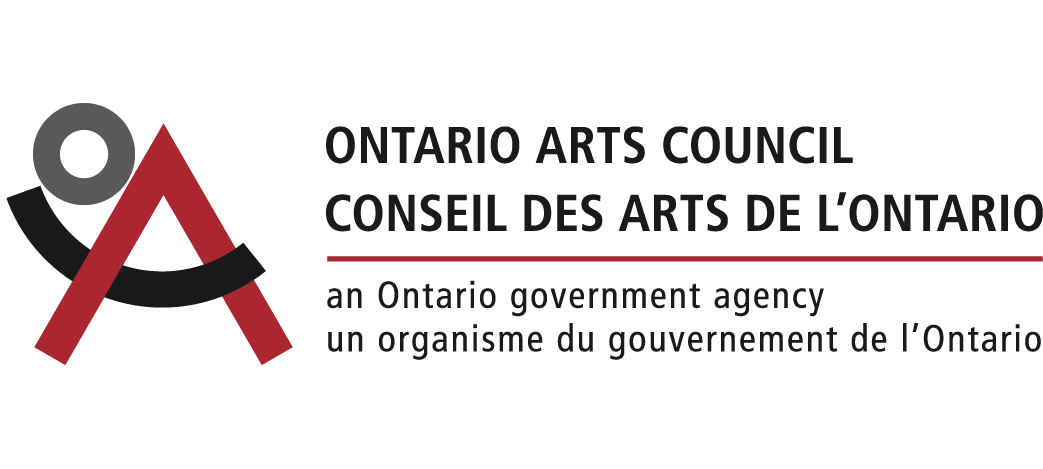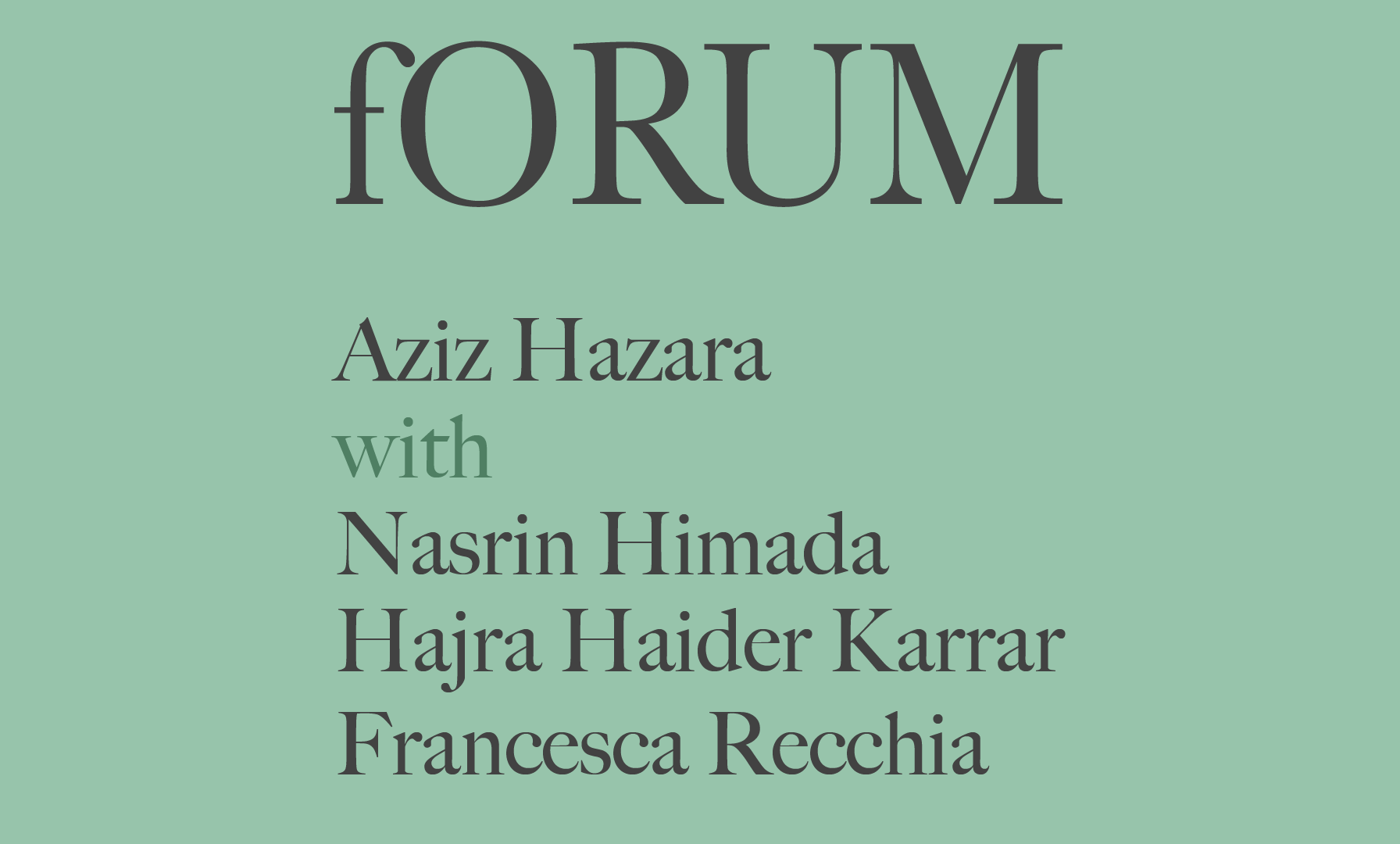Aziz Hazara works across photography, video, sound, code, text, and installation to reflect on the geopolitical landscapes of his home in Afghanistan and the violent impacts of occupation, invasion and war. His practice looks at the technologies of power that form through surveillance, and those that manifest in the weaponization of representation.
In Hazara’s film installation titled, Bow Echo (2019), five boys are seen braving harsh winds to climb atop a large rock from which they ceremonially sound a kazoo—a small gesture that hopes to carry an urgent message in their community’s plight against repression and violence. Situated on the high hills of Kabul Province, in a landscape that bears the marks and mirrors the trauma of its people, the echoing sound of the kazoo becomes both an eerie overlay and a resounding pronouncement of life.
The artist’s work has long interrogated the mechanics of internal borders and territories that are negotiated under military occupation. Against these unlivable conditions of colonial violence, Hazara’s work offers a close study of collective and intimate expression. His practice opens broader conversations around grief, documentation, and memorialization as elements that bind a collective experience, stretched out across landscapes.
For Hazara, the life of an individual or a community cannot be justly treated by common methods of representation. This is a central point of interest in Himada’s curatorial framing of the exhibition that speaks to the tensions between the form of artistic interrogation and representational convention. Bow Echo takes up the difficult task of assembling expressions of mourning and empathy, of survival and steadfastness to draw parallels between a collective life force, and the collective love expressed for home, land and the people.

